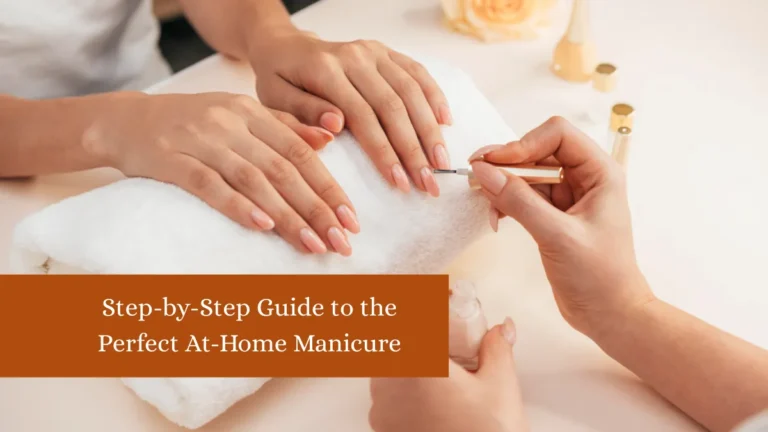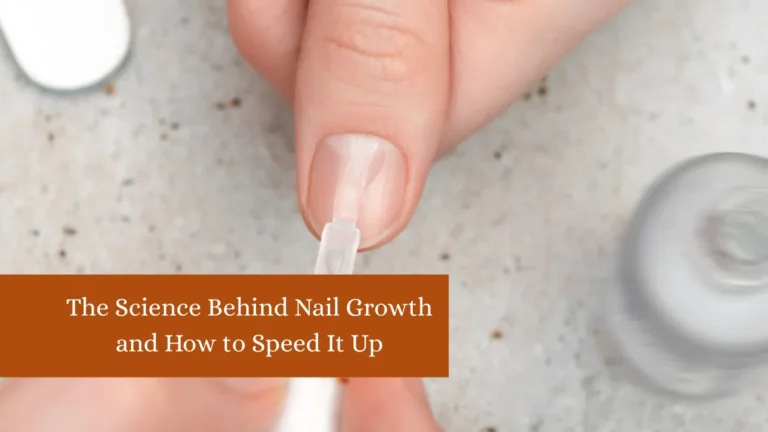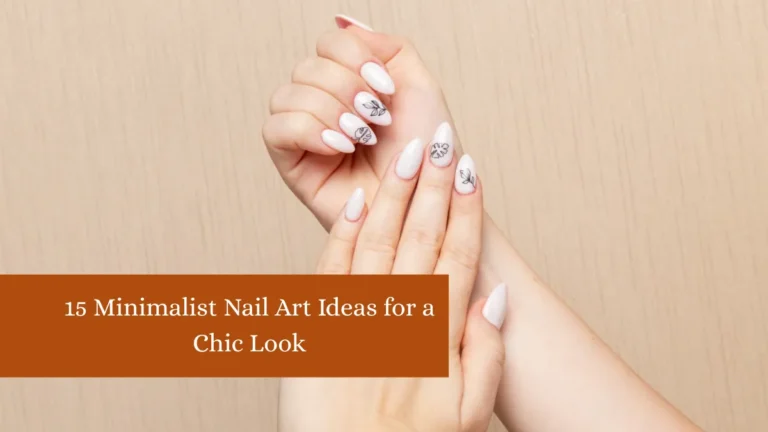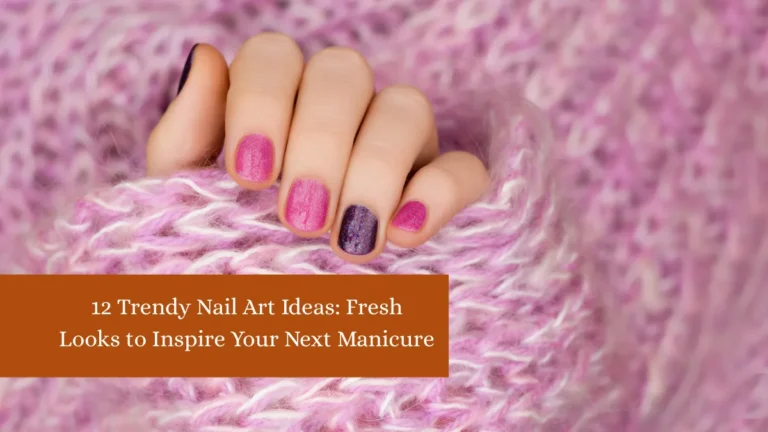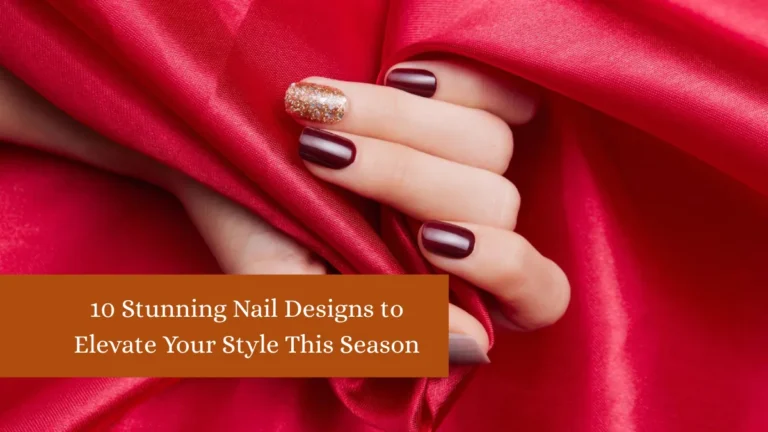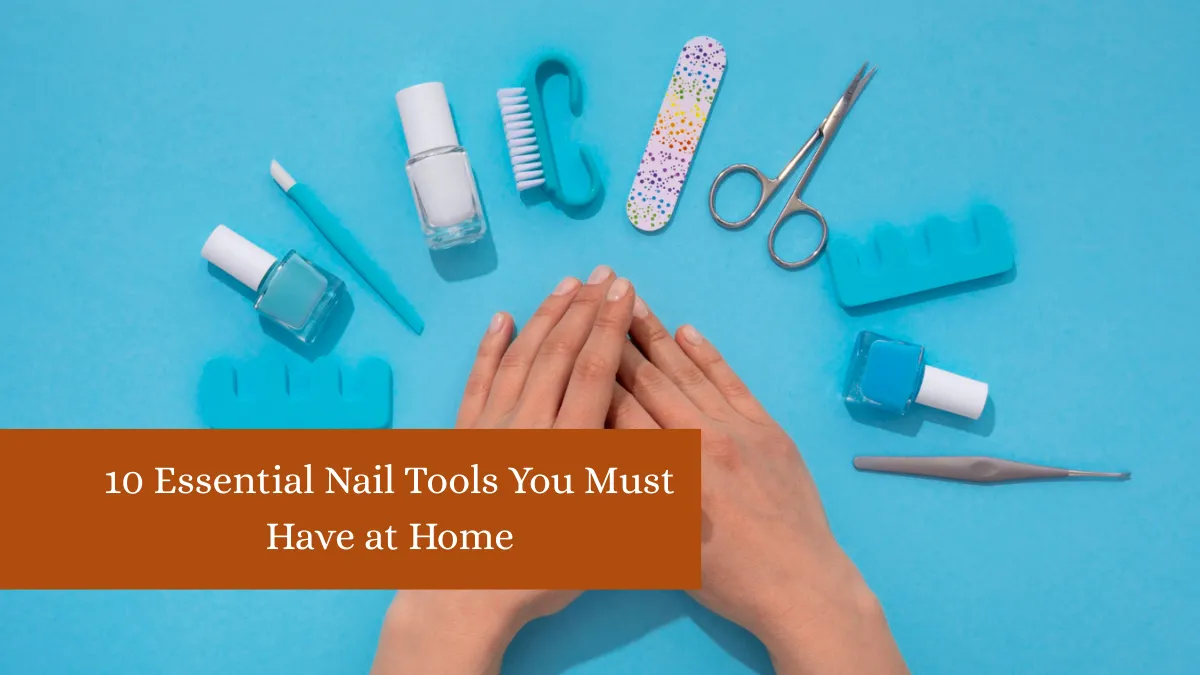Taking care of your nails at home isn’t just about aesthetics—it’s also about maintaining their health and strength. While regular salon visits are great, having the right tools in your own space can help you keep your nails in excellent condition between appointments or even replace salon visits entirely. Whether you enjoy DIY manicures, simple nail maintenance, or intricate nail art, having a well-stocked nail care kit is essential.
The right tools ensure you can shape, buff, trim, and protect your nails without causing damage. Without them, you risk uneven edges, hangnails, or even infections. In this guide, we’ll explore 10 must-have nail tools every person should keep at home. Each tool plays a specific role in nail care, and together, they allow you to achieve professional-quality results without stepping out your door. By investing in these essentials, you’ll save time, money, and keep your nails looking beautiful year-round.
1. Nail Clippers
Nail clippers are the foundation of any nail care kit. Designed to trim nails quickly and precisely, they help prevent breakage and maintain a neat appearance. There are two main types—straight-edged and curved-edged clippers. Straight-edged clippers are ideal for toenails as they reduce the risk of ingrown nails, while curved-edged clippers are best for fingernails, allowing for a more natural shape.
When choosing a nail clipper, opt for a high-quality stainless steel version, as it will remain sharp and resist rusting over time. Low-quality clippers can leave jagged edges or require multiple presses, which increases the risk of splitting the nail. Always clean your clippers after use with alcohol to prevent bacteria buildup. It’s best to clip nails when they are dry to get a clean cut and avoid bending or tearing. This simple yet essential tool should be replaced every few years or whenever it starts losing its sharpness.
2. Nail File or Emery Board
A nail file or emery board is essential for shaping and smoothing nail edges after clipping. Filing helps prevent snags and splits, ensuring your nails look polished and uniform. Emery boards are affordable and disposable, making them a hygienic choice. For a longer-lasting option, a glass or crystal nail file is ideal, as it’s gentler on nails and can be washed and reused. When filing, always move in one direction to avoid weakening the nail by creating microtears.
Avoid sawing back and forth, which can lead to peeling and breakage. A fine-grit file is suitable for natural nails, while coarser files are better for artificial or acrylic nails. Keep a small file in your purse or desk drawer for quick touch-ups throughout the day. This simple step prevents small chips from turning into major breaks and maintains your preferred nail shape effortlessly.
3. Cuticle Pusher
A cuticle pusher is used to gently push back the thin skin at the base of your nails, helping to create a neat and elongated nail bed. This not only improves the appearance of your nails but also provides a smooth surface for polish application. Cuticle pushers come in two main types—metal and wooden (also called orangewood sticks).
Metal pushers are durable and easy to sanitize, making them ideal for long-term use, while wooden sticks are disposable and great for hygiene, especially when doing someone else’s nails. To use, first soften the cuticles by soaking your hands in warm water or applying cuticle oil. Then, gently push back the skin without applying too much pressure to avoid damaging the nail matrix. Regular cuticle care prevents overgrowth and reduces the risk of hangnails or infections. Always follow with moisturizer to keep the area healthy.
4. Cuticle Nippers
Cuticle nippers are small, sharp tools designed to trim away excess cuticle skin and hangnails. Unlike clippers, which are meant for trimming the nail itself, nippers are specifically shaped to target delicate skin without damaging the nail plate. They’re especially useful for removing stubborn bits of dead skin that can’t be pushed back easily. High-quality stainless steel nippers stay sharp for precise trimming, but they should be used carefully to avoid cutting live skin, which can lead to pain or infection.
Before using, sanitize the tool with rubbing alcohol and ensure your cuticles are softened with oil or warm water. Only trim what is necessary—over-cutting can damage the protective seal around your nails. After trimming, apply a nourishing oil or cream to rehydrate the area. Using nippers regularly, but carefully, will keep your nail beds clean and your manicures looking fresh longer.
5. Buffer Block
A buffer block is a multi-sided tool used to smooth out ridges, remove surface stains, and add a natural shine to your nails. It’s a great way to enhance nail appearance without using polish. Most buffer blocks have four sides with varying levels of abrasiveness—starting from coarse to smooth—each serving a specific function. Begin with the rougher side to even out any ridges, then move to finer sides for smoothing and polishing.
Buffing should be done sparingly, as over-buffing can thin the nail plate and make nails more prone to breakage. Once every two to three weeks is ideal for maintaining a healthy shine. Buffers are also perfect for preparing nails before applying polish, as they help the base coat adhere better. Choose a high-quality buffer that won’t crumble after a few uses, and clean it regularly to prevent bacteria buildup.
6. Nail Brush
A nail brush is an often-overlooked tool that plays a big role in maintaining nail hygiene. It’s designed to clean dirt, debris, and bacteria from under and around your nails, keeping them fresh and healthy. Regular use prevents discoloration and infections, especially for those who work with their hands or cook frequently. Nail brushes come in various shapes and bristle strengths—soft bristles are best for gentle cleaning, while firmer bristles can tackle tougher grime.
Use the brush with mild soap and warm water, scrubbing lightly to avoid damaging the skin. It’s particularly useful before manicures, ensuring a clean base for polish application. Nail brushes can also be used to gently exfoliate the skin around your nails. Always rinse and dry the brush thoroughly after use to maintain hygiene. This small, affordable tool is a must-have for anyone who values both appearance and cleanliness.
7. Cuticle Oil
Cuticle oil is an essential product for maintaining both nail and cuticle health. Applied regularly, it hydrates and nourishes the nail bed, preventing dryness, peeling, and cracking. Oils like jojoba, almond, vitamin E, or argan are rich in nutrients that penetrate deeply, promoting stronger and more flexible nails. For best results, apply cuticle oil at least once daily—ideally after washing your hands or before bed—to allow it to absorb overnight.
Regular use also improves the longevity of manicures by keeping the nail surface smooth and hydrated. You can use a dropper, brush, or rollerball for application, depending on the packaging. Aside from its practical benefits, cuticle oil adds a professional finishing touch to any manicure, making nails look polished and healthy even without color. Investing in a good-quality cuticle oil is one of the simplest ways to significantly improve nail condition over time.
8. Base Coat
A base coat is a clear polish applied before nail color. Its main purpose is to create a smooth surface for polish application, help the color last longer, and protect nails from staining—especially from dark shades. Many base coats also contain strengthening ingredients like proteins or calcium to reinforce weak nails. Applying a base coat is a non-negotiable step for anyone who wants their manicure to last without chipping prematurely.
It acts as a protective barrier between your nail plate and the pigments in nail polish, preventing yellowing and damage. Some base coats are also formulated to address specific nail issues, such as ridges or peeling. For best results, allow the base coat to dry completely before applying color. This extra step might seem minor, but it dramatically improves both the appearance and durability of your manicure, making it an essential tool in your nail care arsenal.
9. Top Coat
A top coat is applied after nail polish to seal in color, add shine, and prevent chipping. It’s the final step in achieving a salon-quality manicure at home. Top coats can be glossy for a high-shine finish or matte for a trendy, subdued look. Some formulas also include quick-dry technology, which is perfect for busy schedules. Beyond aesthetics, a top coat protects your polish from everyday wear and tear, ensuring it lasts longer.
It also smooths out any imperfections and can even revive a manicure a few days after application by adding a fresh layer. When applying, make sure to seal the edges of your nails by brushing along the tips—this helps prevent premature chipping. A high-quality top coat is a small investment that makes a big difference in maintaining a flawless manicure.
10. Nail Scissors
Nail scissors are a versatile tool for trimming nails and handling detailed work like shaping or cutting small snags. Unlike clippers, scissors offer more control and precision, making them ideal for delicate nails or when shaping is key. They’re also great for trimming hangnails or tidying up after filing. High-quality stainless steel scissors are sharp, durable, and easy to sanitize.
Always store them in a protective case to avoid dulling the blades. When using nail scissors, make small, gentle snips rather than large cuts to prevent splitting. This tool is particularly useful for people who prefer a more natural nail shape or have nails that tend to split under the pressure of clippers. With proper care, a good pair of nail scissors can last for years, making them a worthy addition to your home nail care kit.
Bottom Line
Having the right nail tools at home means you can maintain beautiful, healthy nails without constant salon visits. From clippers and files to cuticle care essentials and protective coats, each tool serves a unique purpose in keeping nails strong, clean, and well-groomed. Quality matters—invest in durable, hygienic tools and maintain them properly for the best results. With these 10 essentials, you’ll have everything you need to achieve professional results from the comfort of your own home.
FAQs
1. Can I skip the base coat in my manicure?
No, it protects nails from staining and helps polish last longer.
2. How often should I replace my nail file?
Disposable emery boards should be replaced after a few uses; glass files last longer.
3. Is cuticle oil really necessary?
Yes, it keeps nails and cuticles hydrated, preventing breakage.
4. What’s better for trimming—clippers or scissors?
Both work, but scissors offer more precision while clippers are quicker.
5. How often should I clean my nail tools?
After every use to prevent bacteria buildup and infections.
✨ You May Also Like ✨
